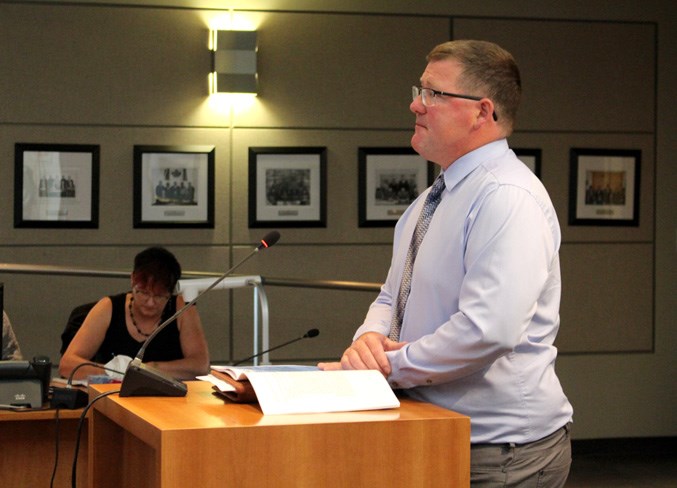The MD of Bonnyville wants to ensure livestock is looked after in the event of an emergency.
Council will be submitting an application for the emergency preparedness grant to update their livestock emergency response plan following their Nov. 20 committee meeting. The grant is offered through the Canadian Agricultural Partnership, a federal and provincial initiative that aims to strengthen and increase the competitiveness of the agriculture sector.
Matt Janz, general manager of environmental and protective services for the MD, explained the preparedness funding would be used to update the MD’s current plan.
“We did an emergency response plan quite a few years ago, just in-house… We were probably one of the first in the province to develop in-house. What we did is we put out a bunch of different scenarios, and how we would respond to that by using our equipment,” he said.
A livestock emergency response strategy is a document for MD residents and staff that outlines the procedures taken in the event of a crisis, such as fire, weather, or disease.
“It’s put together as a resource book so that if anything does happen, then we tie it back to our existing disaster plan that we have within the region,” detailed Janz.
The emergency preparedness program grant aims to improve the capacity and readiness for communities to respond to dangerous situations that could negatively affect plant and livestock health, food safety, and irrigation conveyance.
The municipality developed their plan about five years ago. When it was implemented, the MD realized there were some missing parts, such as the procedure to reach animals left during a wildfire.
“Was it 100 per cent great? No, but it was better than not having that in place. We felt that now that there’s funding available in this grant that we should update it, put those missing pieces in there, and get the livestock owners involved too, where the previous time we didn’t have farmers involved so they understand what to do if we have to enact this plan,” stated Janz.
The original draft included the resources at the MD’s disposal and the steps to take depending on the situation.
“We have a contractor list out there for who can work the equipment, who can haul the animals, and the areas where we can take the livestock,” noted Janz.
According to Janz, the strategy was put into place in order to make sure everyone involved had an idea of the what to do.
“It benefits our producers. It either protects their livestock, or their property. It gives them the help they need when they need it and quickly,” he said, adding it could also prevent a virus threat from escalating.
“For example, if we have anthrax come through a herd of beef, we can quarantine them, and keep it to one location instead of letting it spread, and having a handle on the situation.”
The project is estimated to cost $50,000; $25,000 would be paid for by the MD with the Canadian Agricultural Partnership covering the balance.
After hearing about different scenarios as a result of wildfires in the province, Janz noted there were some situations that weren’t included that could be covered through the update.
“A few things we didn’t address is that if animals stay in an area, who’s going to get access to those animals to make sure that they’re looked after. In the past few years, that was one of the big hiccups for (other municipalities), nobody could get back into the fire area and some animals did parish because there wasn’t the proper plan to go in there,” he expressed.
The MD would gather feedback from local farmers to ensure their concerns are heard.
“We would hire a consultant to come up with a plan, and we’d go to a couple of stakeholder meetings with the producers,” Janz explained. “We would have a couple of meetings with them, and see what their needs and wants are.”
The money would also cover the cost of training MD staff, emergency response departments, residents, and Agricultural Service Board members.
Once that process is completed, a draft will be brought to council to be approved before it’s shared with residents.
The MD has reached out to the County of St. Paul and Lac La Biche County to be involved.
“They would just shadow us in the whole process, and have any input on it that kind of relates to them. At the end of the day, it’s still our plan, they’re welcome to have the finished documents, and if they want to follow through with their own plans, they’re welcome to get their documents,” Janz noted.
Coun. Darcy Skarsen wondered if an update could be done in-house again, instead of having a consultant hired to do the work.
“Everywhere I’ve worked we’ve had emergency response plans for everything and we didn’t pay $50,000 for a company to come in and do an emergency response plan,” he noted.
The importance of the plan in the event of an emergency is one of the reasons CAO Luc Mercier believes it’s crucial to bring in a company.
“We need to rely on those to help save animals in our region and to ensure that we look at all aspects. It’s good to get a third party that isn’t just our Agricultural Service Board or in-house people to look at these,” he said.



